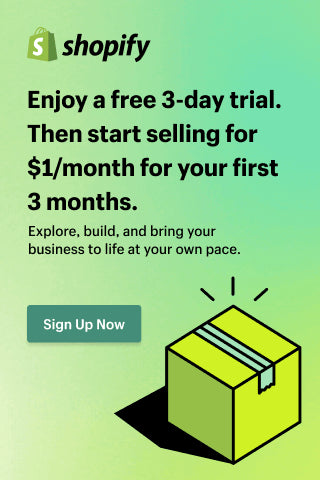5 Smart Upsell & Cross-Sell Tactics That Boost AOV Instantly
While traffic generation needs a steady budget and consistent effort, merchants can instantly see their revenue grow by focusing on what happens after customers are already shopping, thanks to upselling and cross-selling tactics.
These two strategies have been part of retail for decades, but modern online stores now have more sophisticated tools to implement them seamlessly.
When used thoughtfully, they not only boost revenue but also improve the shopping experience by helping customers discover relevant products, better versions of what they already love, or valuable add-ons.
Before diving into the best upsell & cross-sell tactics that can instantly lift your store’s performance, let’s take a closer look at what these terms mean and when to use them.
What is Upselling and Cross-Selling?
Upselling and cross-selling often go hand in hand, but they are not identical. Both are designed to encourage customers to spend more, yet the methods differ.
What is upselling?
Upselling is persuading customers to upgrade to a higher-priced or premium product version they are already considering. Instead of adding something entirely new, upselling focuses on increasing the value of the initial purchase.

For example, a shopper looking at a basic smartphone model. An upsell might highlight the next-level version with more storage, a better camera, or extended warranty, showing why it delivers greater value. Upselling always demonstrates clear benefits that justify the additional cost.
In general, upselling is about enhancing the customer’s choice, making them feel more satisfied with their purchase, while simultaneously raising your store’s AOV.
What is cross-selling?
Cross-selling, on the other hand, is recommending complementary products or services that complement the item a customer is buying. Instead of suggesting an upgrade, it adds depth to the shopping cart.

For instance, a shopper who buys running shoes might be shown athletic socks, a fitness tracker, or a water bottle. Each suggestion is directly relevant, making the overall experience feel complete.
Cross-selling works best when it feels natural, not forced. Customers appreciate thoughtful suggestions that enhance the utility of their main purchase, and this builds trust in your brand while increasing sales.
When to Use Upselling and Cross-Selling
Although both strategies are powerful, timing matters. Knowing when to apply upselling or cross-selling is very important for maximizing impact without overwhelming your buyers.
When to use upselling
Upselling is most effective when customers are already focused on making a purchase but are still weighing their options. This usually happens during:
-
Product detail pages: When shoppers are exploring specifications, showing premium versions highlights the difference in quality.
-
Cart pages: Customers might reconsider their choice when presented with slightly higher-value options.
-
Checkout flow: Trust badges, customer reviews, and scarcity prompts can make premium upgrades more appealing at the final step.
Upselling is best suited when the upgrade is easy to understand and the benefits are crystal clear.
When to use cross-selling
Cross-selling works well when customers have already committed to buying something. Merchants can apply cross-selling tactics in these cases:
-
Cart drawers or slide carts: Shoppers are reminded of items they might have overlooked.
-
Post-purchase pages: Recommending add-ons after checkout often feels like a friendly tip rather than a sales push.
-
Email follow-ups: Customers who bought one product can be introduced to complementary items through personalized campaigns.
The timing ensures that customers see cross-selling as helpful suggestions, not distractions from their main purchase.
5 Smart Upsell & Cross-Sell Tactics that Boost AOV Instantly
Now that the basics are clear, let’s dive into five smart upsell & cross-sell tactics that can immediately raise your AOV and enrich the shopping journey.
Personalized recommendations in the cart drawer
Modern shoppers expect online stores to “know” them. Personalized recommendations in the cart drawer are one of the most effective ways to show that your store understands customer intent.

By displaying “frequently bought together” products or suggesting items related to the current cart, merchants can nudge shoppers toward impulse purchases. The convenience of adding an item directly from the cart drawer makes it hard to resist.
For example, a customer adding a camera to their cart might see a tripod or memory card appear as a recommendation. The relevance makes the suggestion feel natural and valuable.
Multi-tier rewards with a progress bar
Nothing motivates customers like visible progress toward a reward. Multi-tiered progress bars that unlock free gifts, discounts, or free shipping once a spending goal is reached create excitement.
Imagine a shopper seeing:
-
“You’re $10 away from free shipping!”
-
“Spend $50 more to unlock a free tote bag!”
This gamified approach turns shopping into a challenge. Customers often add extra items just to reach the next tier, boosting AOV in a way that feels fun and rewarding.
Add-on services for extra value
Sometimes customers don’t want more products but are willing to pay for peace of mind or convenience. Offering add-ons such as shipping protection, gift wrapping, extended warranties, or priority shipping taps into this mindset.

These small additions carry high margins for merchants and deliver genuine benefits to customers.
A buyer who just invested in an expensive gadget will likely see an extended warranty as a smart decision, while someone purchasing a gift appreciates the option to have it nicely wrapped.
Scarcity and social proof at checkout
Checkout is the critical stage where hesitation can lead to cart abandonment. Upselling at this point must be subtle yet persuasive. Scarcity triggers like countdown timers, low stock alerts, or limited-time offers create urgency.
Pairing these with social proof elements, such as customer reviews, testimonials, or trust badges, reassures shoppers that upgrading or adding one more item is the right decision.
Post-purchase offers that feel helpful
The transaction doesn’t have to end at checkout. Post-purchase upselling and cross-selling provide another golden opportunity.

Offering relevant items immediately after the purchase, or sending follow-up emails with “complete your set” recommendations, captures customers while they are still in buying mode.
For instance, someone who just bought a coffee machine might appreciate an offer for specialty coffee beans or a stylish mug set. Since they already trust your brand, the likelihood of conversion is higher.
The Final Words
Upselling and cross-selling are timeless strategies that have adapted beautifully to the digital age. By blending relevance, timing, and customer psychology, merchants can significantly boost revenue while delivering more value to their shoppers.
The five tactics discussed: personalized cart recommendations, progress bar rewards, add-on services, scarcity at checkout, and post-purchase offers work together to turn every shopping session into an opportunity for growth.
With tools like Amote, merchants can implement these strategies effortlessly, ensuring that upsell & cross-sell tactics feel authentic, customer-friendly, and powerful enough to boost AOV instantly.
FAQ
Is upselling better than cross-selling?
Neither strategy is better. Upselling works best when customers are open to upgrading their purchase, while cross-selling excels at adding complementary products. The most successful stores use both tactics wisely.
How do I avoid annoying customers with upselling and cross-selling?
You should always suggest products that align with the customer’s original choice. When the offers feel thoughtful and valuable rather than pushy, customers perceive them as helpful guidance.
Can small online stores benefit from upselling and cross-selling?
Absolutely. Even stores with a modest product range can see significant revenue growth by introducing progress bar rewards, offering small add-ons, or recommending frequently paired items. These tactics work for businesses of all sizes.





